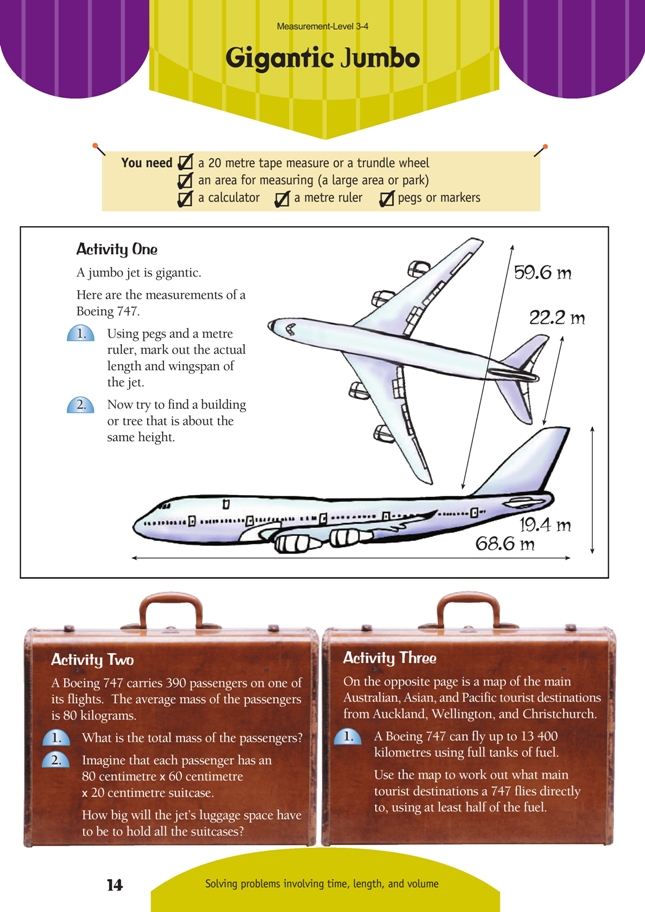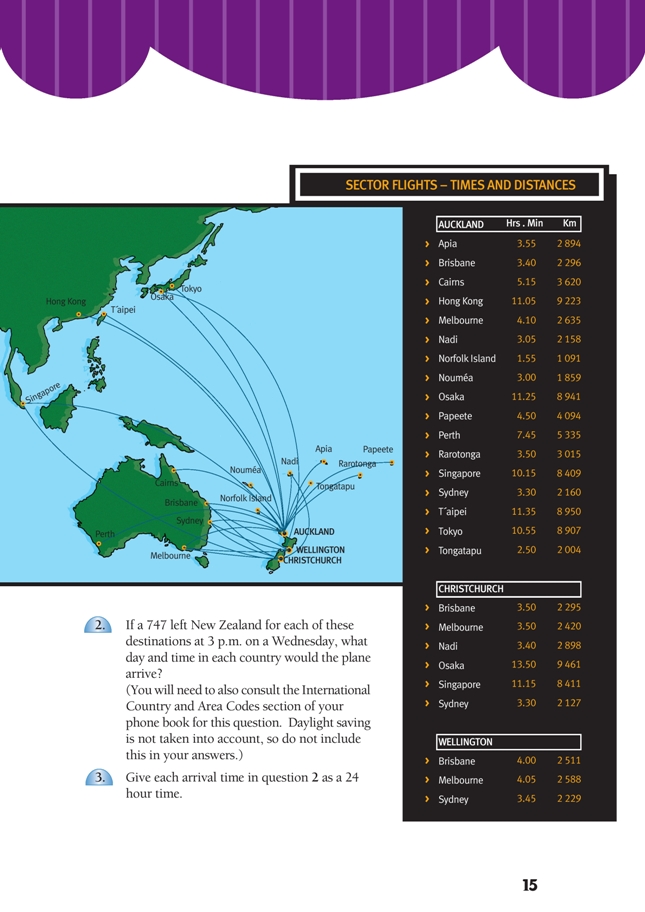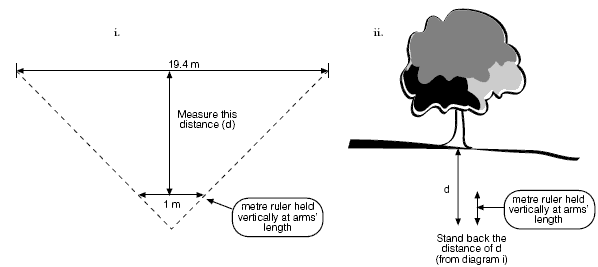This is a level 3 and 4 measurement activity from the Figure it Out series.
A PDF of the student activity is included.
Click on the image to enlarge it. Click again to close. Download PDF (1852 KB)
find volumes of cuboids
interpret charts
solve problems involving time and distances
an area for measuring (a large area or park)
FIO, Level 3-4, Measurement, Gigantic Jumbo, pages 14-15
calculator, metre ruler, pegs or marker
Activity One
Have the students use their knowledge of the size of their playing field to estimate the positions for the pegs to show the length and wingspan. Then they can use a trundle wheel or a 20 metre tape measure to confirm the actual positions for the pegs.
Remind the students how to use the trundle wheel correctly. Most trundle wheels revolve in only one direction so the clicking device will not break. Show the students the correct starting position so that the wheel makes a full turn before the count begins.
One way of finding an object that would be the same height as a jet would be to mark a distance of 19.4 metres with pegs on the ground. Then hold a metre ruler at arms’ length and parallel to the 19.4 metre marks and walk backwards until the length of the ruler appears to be the same as the marks. (Perspective will make the marks seem closer together the further back you stand.)
Measure the distance between you and the marks. Next, hold the ruler vertically and at arms’ length and find an object that appears to be the same height as the ruler when you are standing the same distance back from it. This will be the height of the jet.
Alternatively, the students could use the shadow technique on page 1 of the students' booklet to find an object 19.4 metres high.
Activity Two
Have the students answer question 1 in kilograms and tonnes to highlight the relationship between these two units of measurement. In question 2, the volume could also be expressed as 37.44 m3 or as 37 440 000 cm3 because 1 000 000 cm3 equals 1 m3.
A cubic metre is a cube with sides of 1 metre. There are 100 centimetres in a metre, so this means each side of the cube is 100 centimetres long. If you calculate the volume of the cube in centimetres, it will be 100 x 100 x 100 = 1 000 000 cubic centimetres.
The students could compare this result to the volume of their classroom.
Activity Three
Note that question 1 requires direct flights that must be at least 6 700 kilometres (that is, half a tank of fuel) away from the point of departure. The International Country and Area Codes section in the telephone book, referred to in question 2, shows how many hours each place is behind New Zealand. Daylight saving is specifically excluded from the question because this could cause unnecessary complications for the students. However, the impact of daylight saving on travel is an interesting topic for discussion.
The students should be able to work out the times without too much difficulty. Singapore, for example, is 4 hours behind New Zealand before daylight saving. So if the 747 departs Auckland on a Wednesday at 3.00 p.m., the flight will take 10 hours 15 minutes, which would make it 1.15 a.m. on Thursday, New Zealand time. But take off 4 hours, and the time would be 9.15 p.m. on Wednesday in Singapore.
A chart like this may be useful:
Another activity that deals with international time zones is on page 18 of Algebra, Figure It Out, Levels 3–4. For Activity Three, question 3, you may need to discuss with the students how to work out 24 hour time.
Answers to Activity
Activity One
1.–2. Practical activities
Activity Two
1. 31 200 kg (31.2 tonnes)
2. 37.44 m3 (37 440 000 cm3)
Activity Three
1. From Auckland: Hong Kong, Osaka, Singapore, T´aipei, and Tokyo
From Wellington: None. (All the flights from Wellington go to Australia first.)
From Christchurch: Osaka, Singapore. (The other destinations require passengers to
stop at Auckland first.)
2. Auckland–Hong Kong: 10.05 p.m. Wednesday
Auckland–Osaka: 8.25 p.m. Wednesday
Auckland–Singapore: 9.15 p.m. Wednesday
Auckland–T´aipei: 10.35 p.m. Wednesday
Auckland–Tokyo: 10.55 p.m. Wednesday
Christchurch–Osaka: 10.50 p.m. Wednesday
Christchurch–Singapore: 10.15 a.m. Wednesday
3. Auckland–Hong Kong: 2205
Auckland–Osaka: 2025
Auckland–Singapore: 2115
Auckland–T´aipei: 2235
Auckland–Tokyo: 2255
Christchurch–Osaka: 2250
Christchurch–Singapore: 2015




